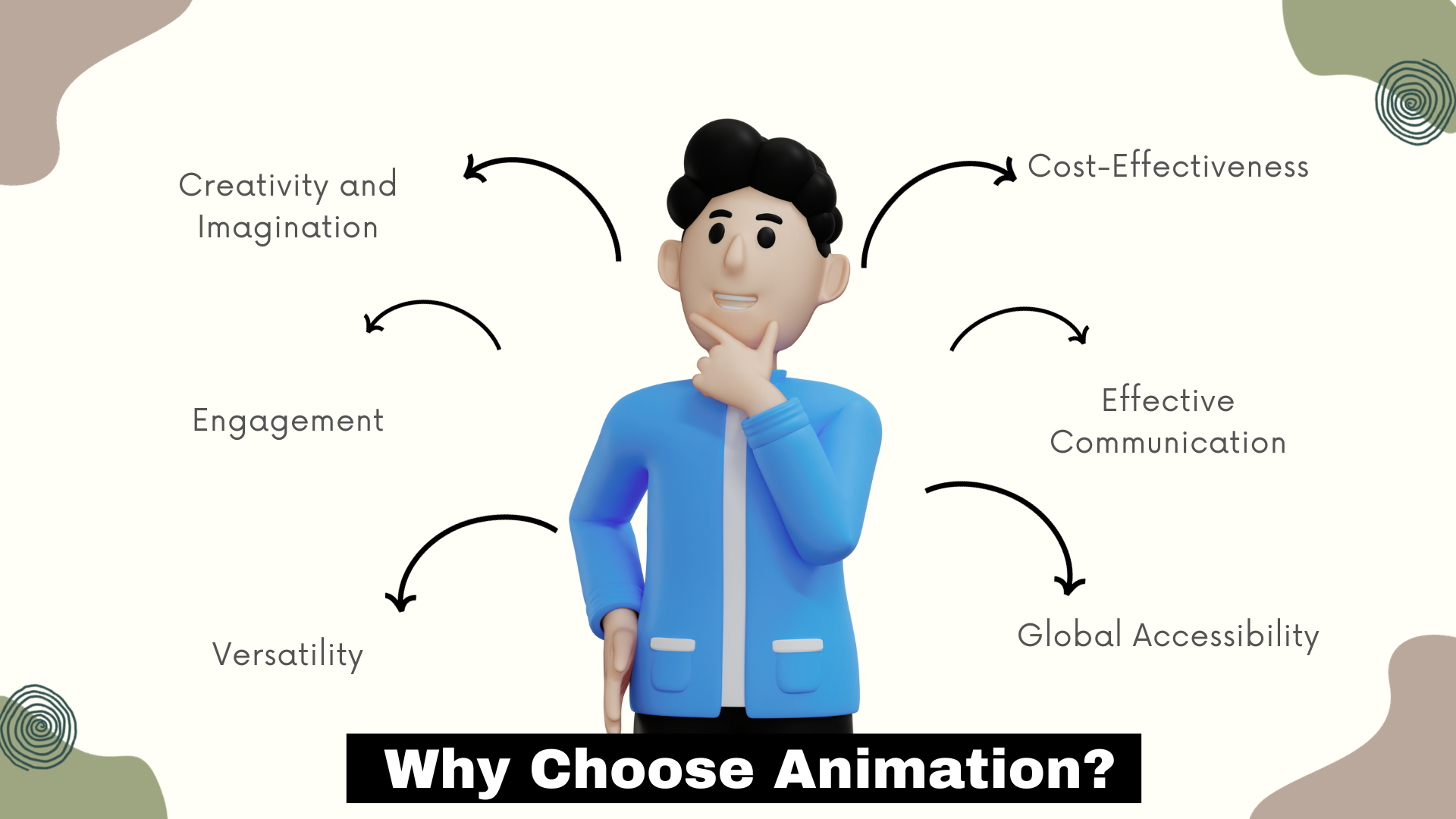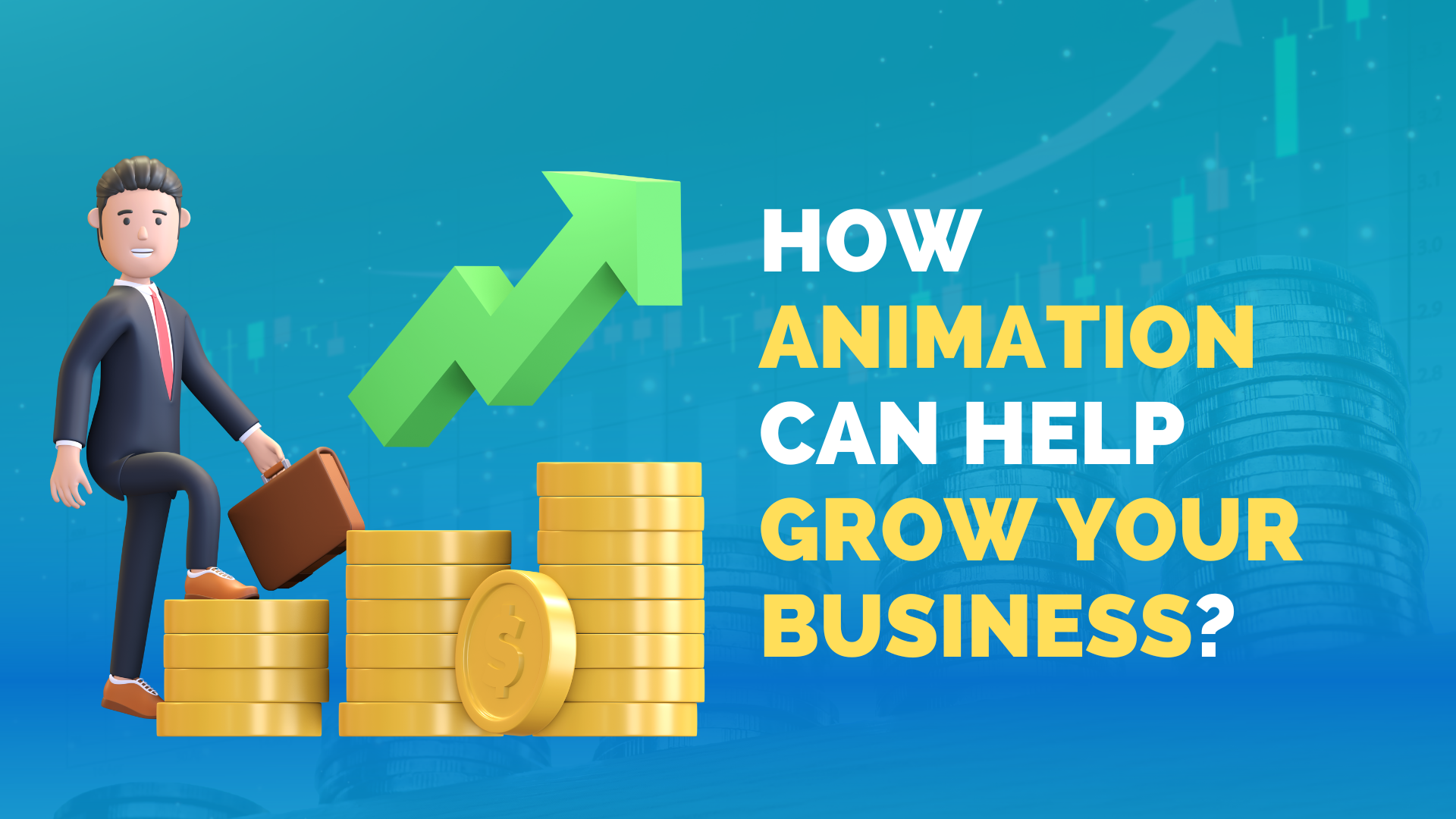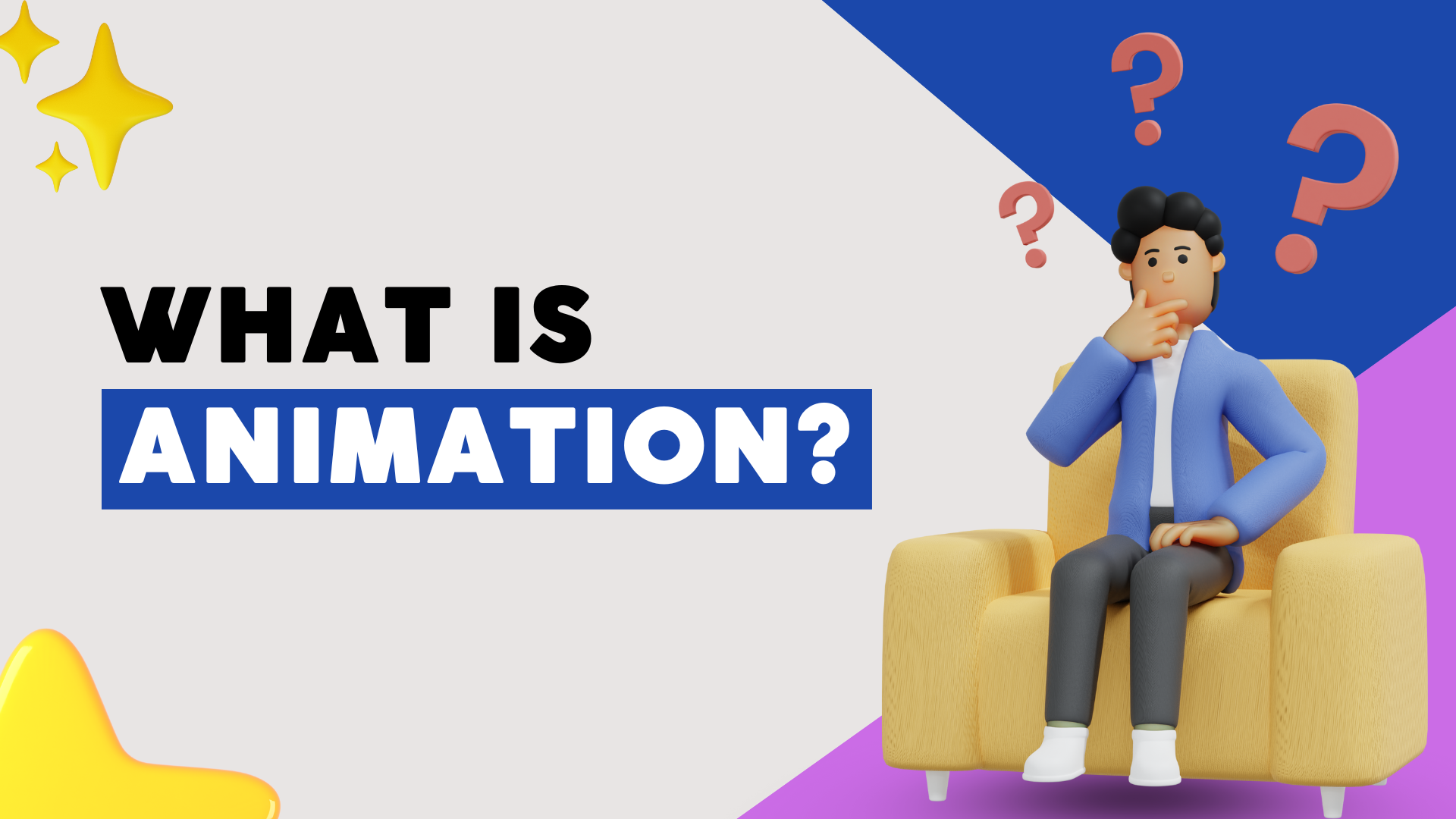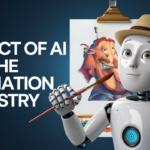We live in a world where animation, the process of animating static images and objects, has become an integral part of our lives. Whether it is exciting movies engaging video games, educational content, or informative advertisements, animation has carved a niche for itself in various fields. In this blog, we’ll explore the fascinating world of animation, delving into its history, different types, and the countless ways it benefits industries and businesses.
History of Animation
Animated images have been around since ancient times when our ancestors created cave paintings and ceramics depicting sequential movements. The era of modern animation began in the late 19th century when devices such as the zoetrope and flipbook were invented. Thanks to the groundbreaking work of pioneers like Walt Disney in the 20th century, animation became popular entertainment, forever changing cinema, and storytelling.
Exploring the Diverse World of Animation: Types and Techniques
Animation comes in various forms, each offering unique creative possibilities:
Traditional Animation: Traditional animation, also known as 2D animation, is the oldest and most classic form of animation. It involves manually creating individual frames, each slightly different from the previous frame, to convey movement when played in sequence. Artists use pencil and paper or a digital tablet to meticulously draw each image.
3D Animation: 3D animation, widely used in movies, television, and video games, creates lifelike characters and environments using computer-generated models. Artists sculpt digital models, apply textures, and use lighting and shading techniques to achieve realism. This type of animation allows for dynamic camera movements and intricate details, offering immersive visual experiences. Blockbuster films like “Avatar” and “Frozen” showcase the awe-inspiring capabilities of 3D animation.
Stop Motion Animation: Stop motion animation involves capturing individual frames of physical objects or puppets, and moving them slightly between frames to create motion. This meticulous technique requires patience and precision, resulting in a distinctive visual style.
Claymation: Claymation is a specific form of stop-motion animation that uses clay models and characters. Artists mold the characters and set pieces from clay and then manipulate them frame by frame.
Motion Graphics: Motion graphics combine graphic design elements with animation to convey information or enhance visual appeal. This technique is commonly used in title sequences, advertisements, and presentations. Motion graphics utilize text, shapes, and images, animating them to create dynamic and engaging visuals. In the digital age, motion graphics play a vital role in online content and advertising campaigns.
Why Choose Animation? (Benefits of Animation)

Creativity and Imagination: Animation allows creators to bring their wildest imaginations to life, transcending the constraints of reality. Animation provides a picture where imagination has no limits. It allows artists to create fantastical worlds, surreal characters, and impossible situations, bringing to life ideas that might be difficult to depict in live-action. The freedom to visualize and animate any idea fosters creative expression, making animation the preferred medium for storytellers and artists.
Engagement: One of the main benefits of animation is its ability to appeal to audiences of all ages and backgrounds. Whether it is a heartwarming animated film, an educational video, or an entertaining animated content that attracts attention and maintains interest. Vivid images, combined with engaging stories, create an immersive experience that resonates with viewers, making them more receptive to the underlying message.
Versatility: Animation can be used in diverse sectors, from entertainment and education to marketing and healthcare. It finds application in entertainment through movies, television shows, and video games, thereby enriching the viewer’s experience. In education, animated videos simplify complex topics, making learning fun and accessible. Similarly, the business world leverages animation in marketing and advertising campaigns, where animated ads and explainer videos improve brand visibility and customer engagement.
Cost-Effectiveness: While producing high-quality animation can be an investment initially, animated content often pays off in the long run. Unlike live-action videos that may require multiple retakes or set designs, animated videos can be edited and edited relatively easily, thereby reducing production costs. Additionally, animated content tends to have a longer shelf life. Once created, it can be reused, repurposed, and adapted to a variety of platforms and campaigns, maximizing its value over time.
Effective Communication: Animation simplifies complex ideas and concepts, making them understandable to a wide audience. Whether explaining complex technological processes, illustrating scientific phenomena, or visualizing data, animation distills information into visually understandable parts. This makes it invaluable in industries such as healthcare, where medical animation helps patients understand medical procedures and treatments, thereby reducing their anxiety and improving their performance. ability to make wise decisions.
Global Accessibility: Animated content speaks a universal language. It overcomes language and cultural barriers, allowing businesses and creators to convey their messages to a wide global audience. This accessibility is especially beneficial in today’s connected world, where businesses and content creators seek to reach international markets and connect with people from different backgrounds.
Animation in Every Field
Aside from entertainment, animation has reached virtually every aspect of life. As a versatile and engaging tool, it enriches communication, education, marketing, and other areas across diverse sectors.
Animation in education transforms complex ideas into visually appealing and easily understandable lessons. It enhances learning experiences for students of all ages through interactive educational apps and animated tutorials. The use of animated characters and scenarios can enhance learning, aiding in retention and comprehension.
Animated movies, TV shows, and video games continue to dominate the entertainment industry.
A medical animation simplifies complex medical procedures, making treatments and surgeries easier for patients to comprehend. Healthcare professionals can use these animations to educate patients and improve health outcomes.
The marketing and advertising industries have seen a significant shift toward animation. Brands stand out in the crowded digital landscape with animated advertisements and explainer videos. Characters and narratives created by animation create emotional connections with consumers, enhancing brand loyalty and recognition.
Architectural and real estate professionals use 3D animations to visualize designs and properties before construction. By using animations, architects and real estate developers allow clients to explore spaces virtually and make informed decisions.
Animation is also beneficial to corporate training. Interactive training modules and simulations create an engaging learning environment for employees. These visual aids enhance training effectiveness and ensure that complex ideas are communicated clearly.
Scientific research uses animation to visualize complex biological processes, astronomical phenomena, and intricate data. Scientists and researchers use animation to communicate their findings in an accessible way, fostering a better understanding among their peers and the public as a whole.
Animating information, telling stories, and connecting with audiences has become an indispensable tool in every industry, from education to healthcare to marketing.
How Animation Can Help Grow Your Business?

Animation is a powerful tool for businesses that can contribute significantly to their success and growth. In marketing and communication strategies, it is an asset due to its dynamic and engaging nature. The benefits of your business can be explained more easily to potential customers through animated explainer videos, for example. As a result, these videos increase customer engagement, boost website conversions, and ultimately increase sales.
Additionally, animation improves brand visibility and recognition. Memorable cartoon characters or mascots can become synonymous with your brand, creating a lasting impression on your audience. Animated content is highly shareable on social media platforms, increasing the reach of your message and attracting more potential customers to your business.
In the field of training and internal communication, animations can streamline complex processes and procedures. Training modules presented in animated form are not only informative but also visually stimulating, helping employees remember the information better. This leads to a more skilled workforce and therefore improves productivity and efficiency in your business operations. Prismart Studio help your business to give your competition an edge click to check out: https://prismartstudio.com/
Animation can give your business a competitive edge by providing modern and creative visuals. In a digital age where visual content is king, businesses that use animation demonstrate adaptability and creativity, attracting tech-savvy consumers. By strategically integrating animation, businesses can drive growth, improve customer relationships, and stay ahead of today’s competitive markets.
Conclusion
In a world of visual content, animation has become a powerful medium for storytelling, education, and business development. Its evolution from traditional hand-drawn animation to complex 3D graphics demonstrates limitless creative and technological possibilities. As businesses continue to exploit the potential of animation, we can expect to see even more innovative and engaging applications in the future, shaping the way we perceive and interact with the world around us. around.




